Native, but invaders nonetheless.
I don’t have anything against any individual animal. The problem comes when it’s in the wrong place — even if they’re native to this area.
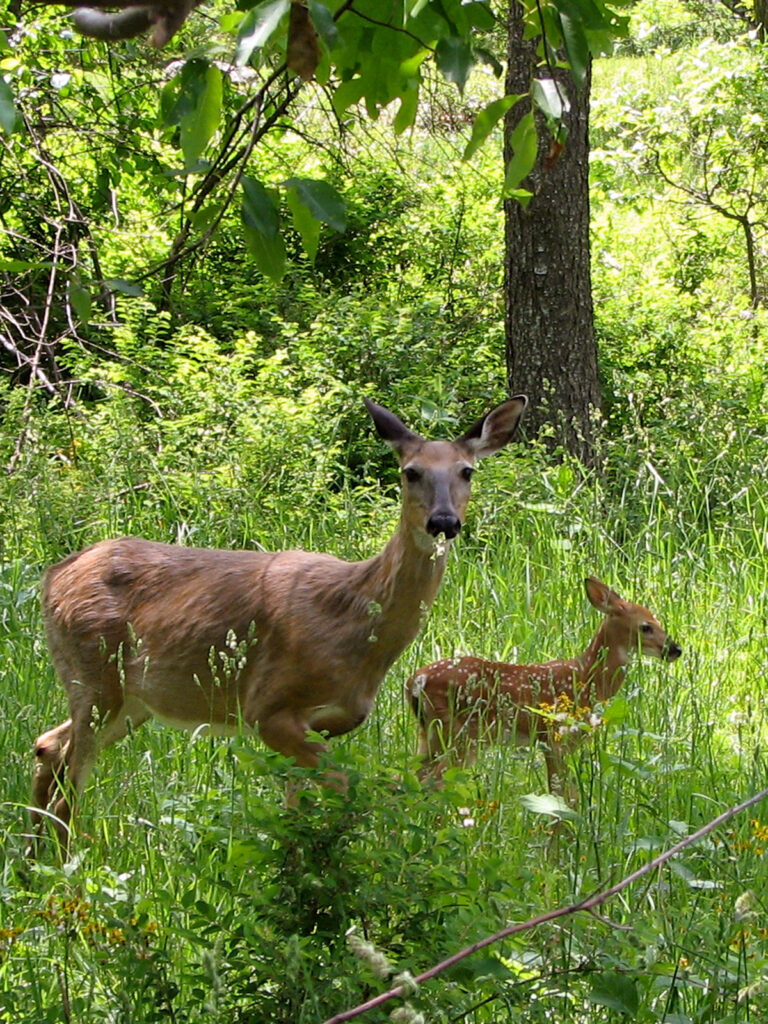
Part of the problem is our pattern of suburban growth. Where do we expect wildlife to go? We’ve taken all the land and changed the dynamics of habitat characteristics to create imbalances.
Worse, we have systematically and deliberately eliminated large predators, degrading the entire ecosystem and upsetting the intended balance of nature.
Some of the native “invaders” we have in our yard are:
Gray squirrels
Squirrels are in a “gray” area, so to speak. We don’t mind a few, but usually there’s more than a few, and they can often eat a lot more than we’d like (including our fruits and vegetables).
Squirrels are native, but more plentiful in a human urban environment than they would be in a more natural setting.
In fact, I’ve read that in the past some squirrel species had been introduced into areas beyond their native range and have caused problems. I don’t know if our squirrels are native to CNY.
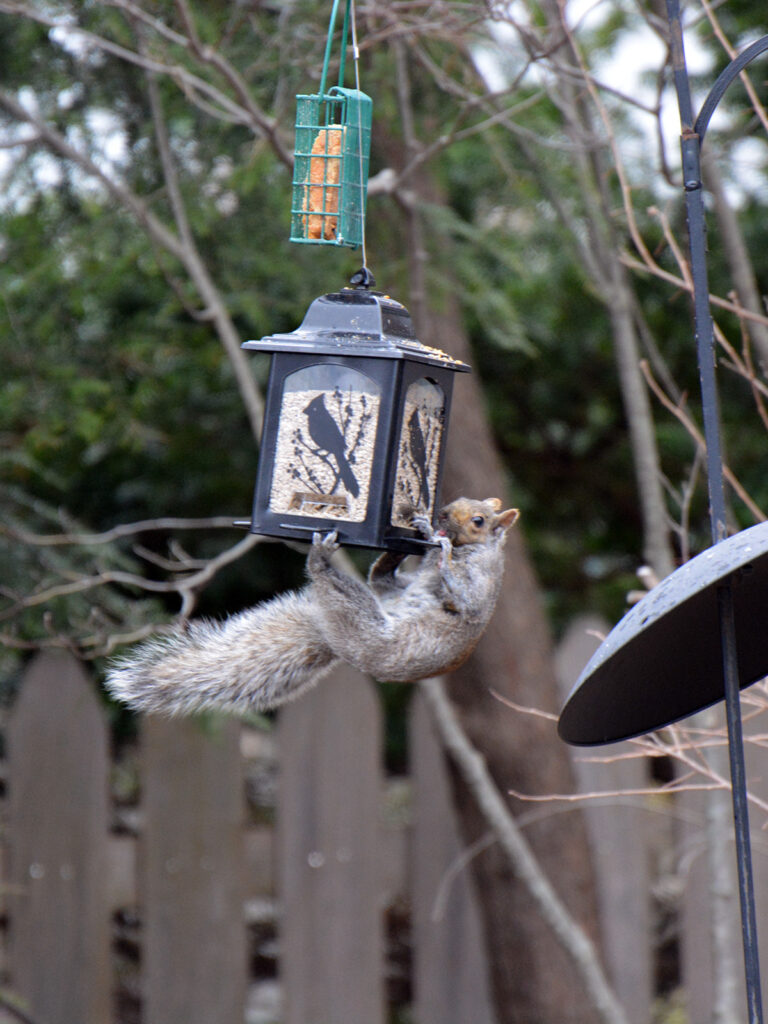
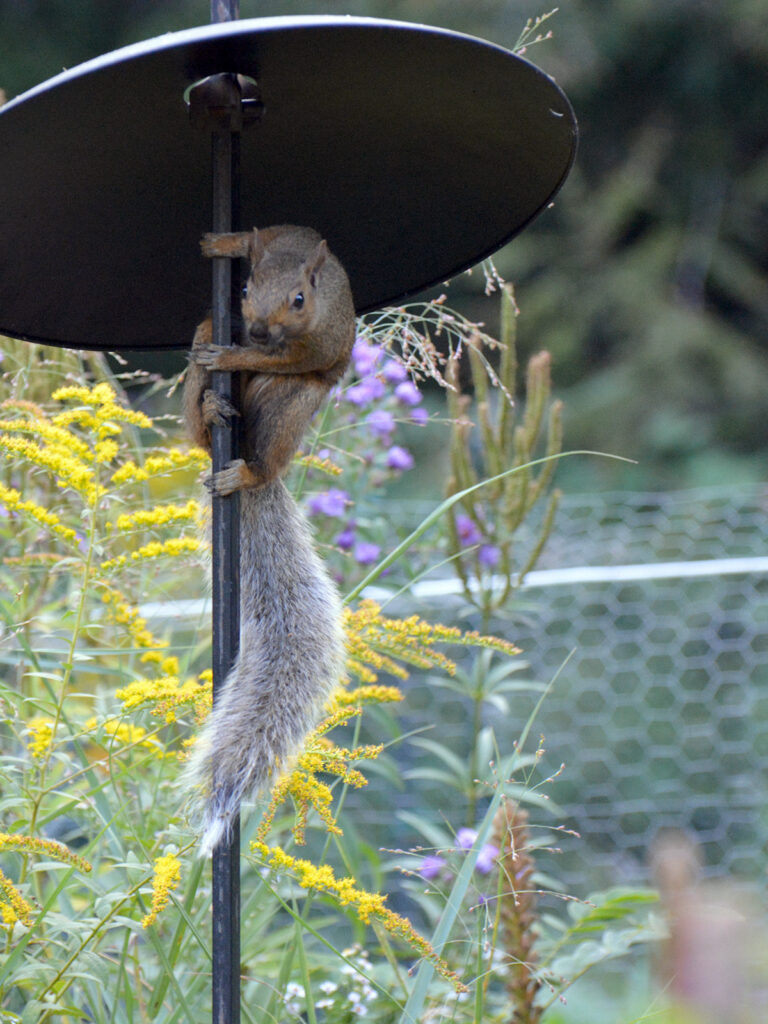
It’s annoying when they eat the food I put out for birds, but this doesn’t happen often since the baffle usually thwarts them.
It’s important to make sure there are no leaping-off places nearby or they’ll leap onto the feeder above the baffle — and they can jump quite a distance!
Squirrels are ingenious and persistent. This squirrel and his friends have learned how to outwit this “squirrel-proof” feeder that shuts its seed opening by simply offloading their weight by clinging to the roof of the feeder! Generally, when we see how much ingenuity and persistence they’ve shown to achieve their goal, we decide they’re entitled to an occasional treat, though buying seed is expensive and meant for the birds.
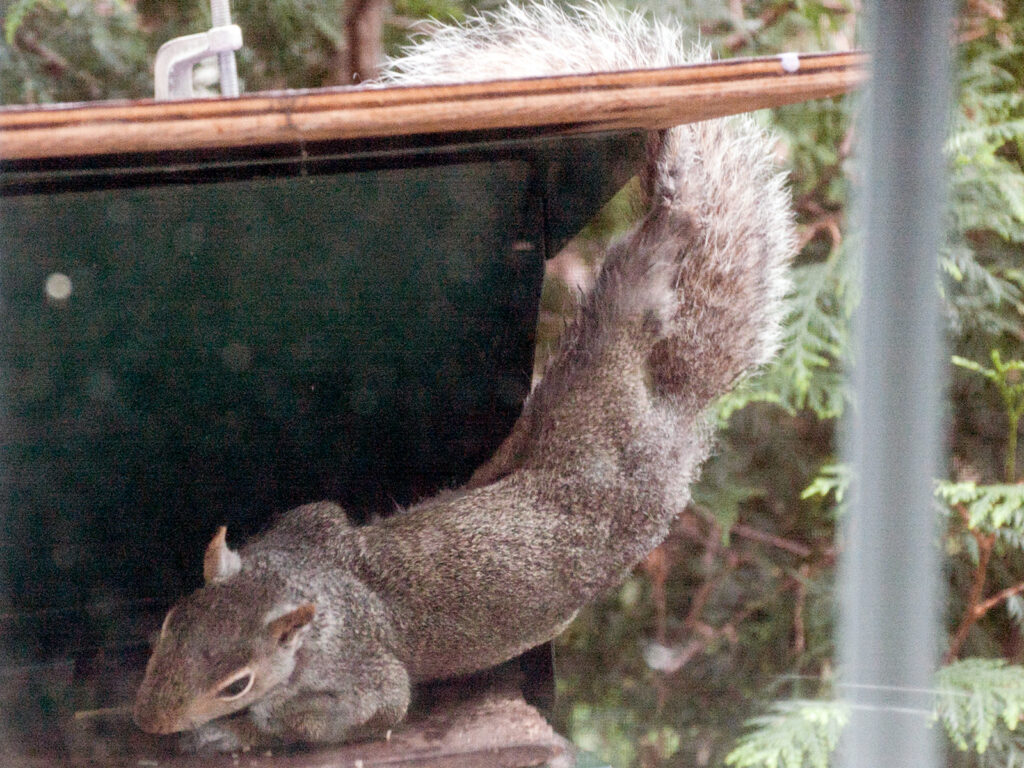
Seeing squirrels eating berries I planted for the birds, such as those on this pagoda dogwood (Cornus alternifolia) is more distressing.
We want these native berries to be nutritious food for birds. One squirrel can eat more berries than many birds would eat, and the berries are in limited supply.
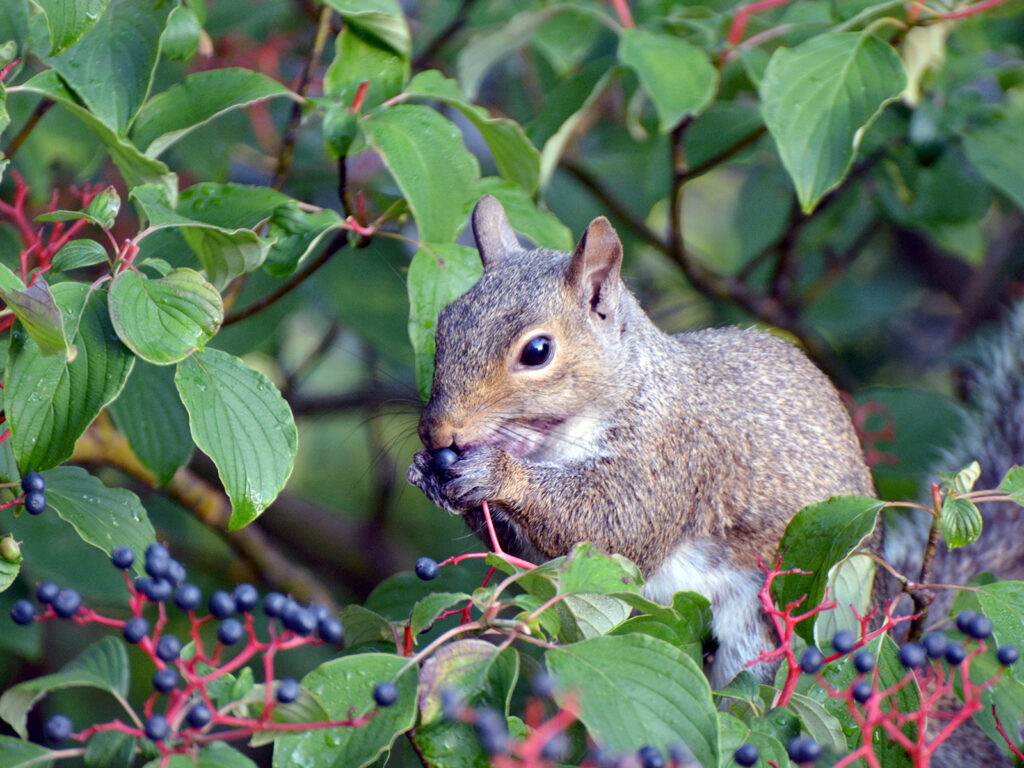
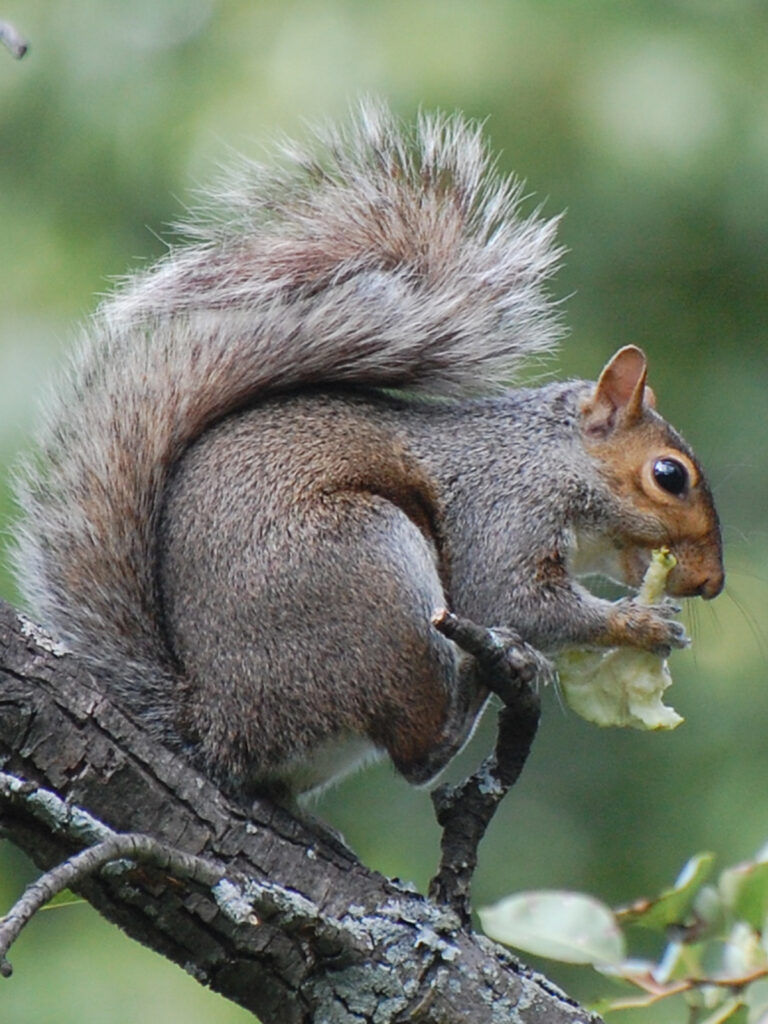
After many years of production, our pear tree declined then died. Squirrels did eat many of the pears, but at least they weren’t eating our other garden produce, especially our tomatoes.
Since the pear tree has died and become a snag, though, they’ve moved on to our tomatoes!
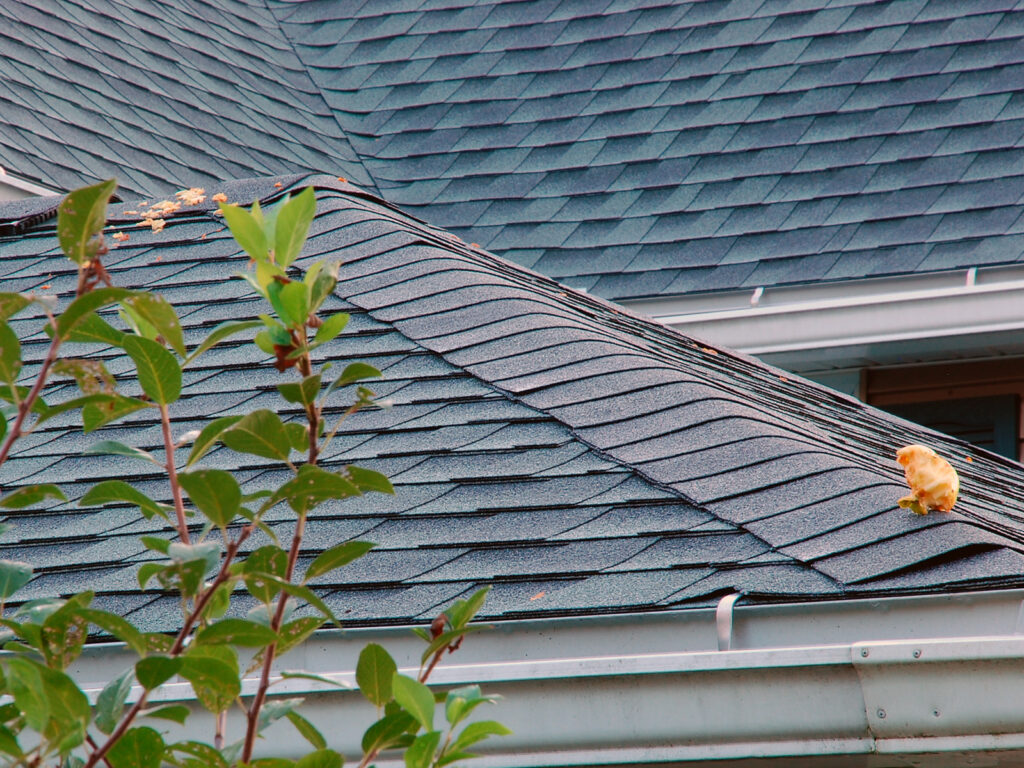
And it was especially frustrating when they don’t finish what they start eating. The remains of their pear chewings are at the top left; the core, poised to drop on someone’s head, is on the right. We often find half-eaten tomatoes on the paths of our edible garden. That’s a battle we’ve given up trying to win. We end up with most of the tomatoes, so it’s easier to let them have a few.
Stumpy the Squirrel
We made one exception to feeding the squirrels. For a few years, we had a squirrel visitor that clearly had a hip problem or some disability, including a permanently shortened tail.
Since neighbors had been feeding him previously, he was already very tame and came up to our back yard door expecting food.
We enjoyed feeding this little guy — whom we dubbed “Stumpy the Squirrel” — since he probably had a hard life (though he managed to survive for at least a few years).
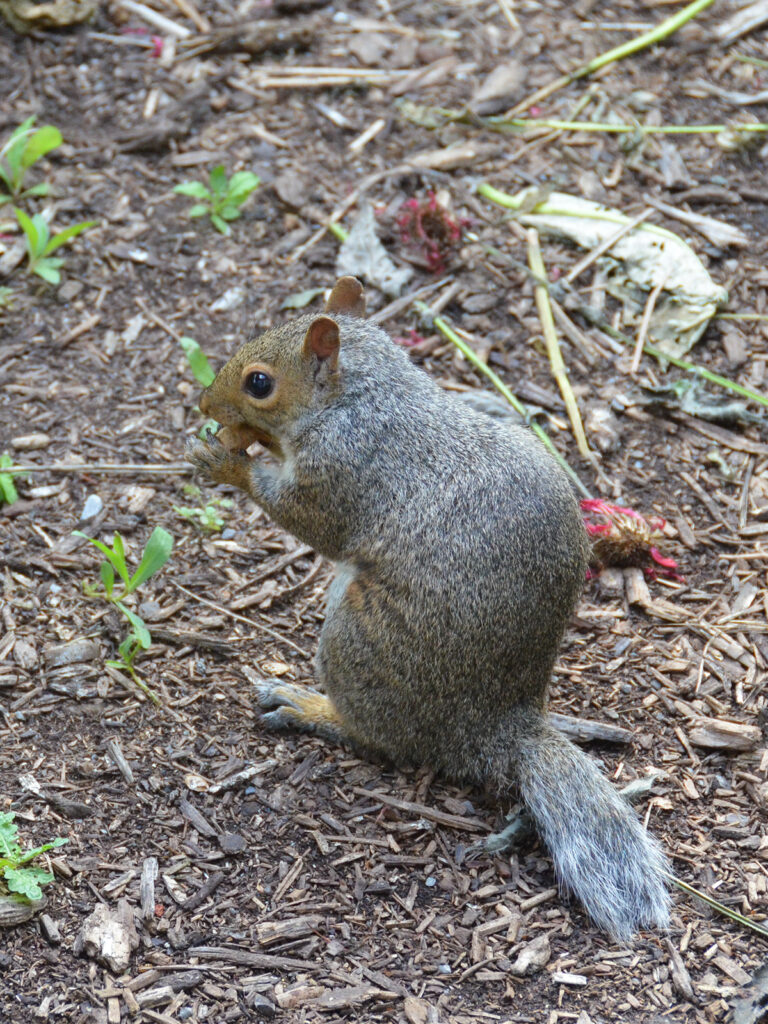
Resources
- The Humane Gardener:
- The Washington Post:
Reflections
The significant problems we have cannot be solved at the same level of thinking with which we created them.
~ Albert Einstein
